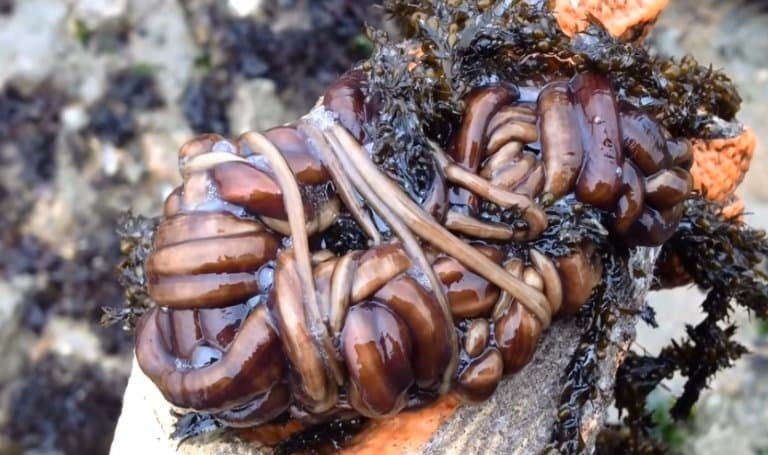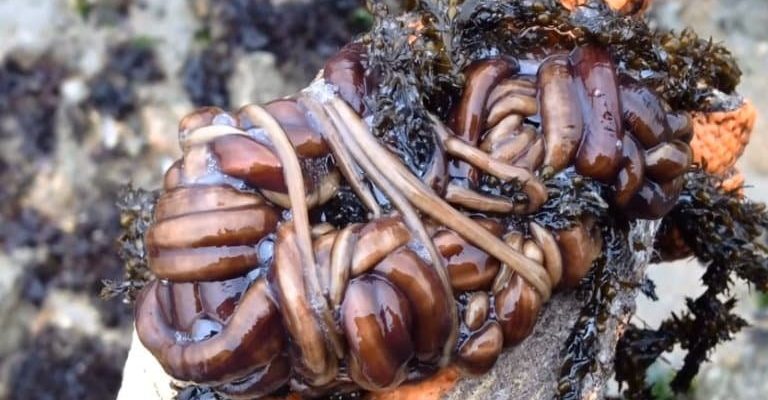
The bootlace worm, known scientifically as *Lineus longissimus*, can be pretty bewildering. It’s one of the longest animals on Earth, stretching up to 55 meters (about 180 feet). But its impressive length isn’t the only thing that makes it remarkable. Its hunting strategy involves a potent cocktail of mucous and toxic compounds, which it cleverly deploys to immobilize its prey. Intrigued? Let’s dive into the weird and wonderful world of bootlace worms.
What Are Bootlace Worms?
Bootlace worms are part of the nemertean family, which are often referred to as ribbon worms. These fascinating creatures are primarily found in marine environments, typically hiding in the sand or among rocks. Their name comes from their long, ribbon-like shape, which can resemble a bootlace—hence the name.
These worms have a unique body structure. They possess a long, flexible body that allows them to move gracefully through their environment. Their skin is covered in a slimy layer of mucus, which isn’t just for show. This mucus plays a crucial role in their survival, particularly when it comes to hunting and protecting themselves from predators. While you might think of worms as simple creatures, bootlace worms are equipped with complex systems that make them quite adept in their environments.
How Do Bootlace Worms Hunt?
Hunting is more than just catching prey; it’s about strategy. Bootlace worms use an elaborate method to hunt—primarily relying on **mucus** and **toxins**. When a bootlace worm senses its prey, often small fish or crustaceans, it secretes a sticky, **viscous mucus**. This mucus acts like a fishing net, trapping its unsuspecting target. Isn’t that clever?
Once the prey is ensnared, things get even trickier. The bootlace worm is equipped with specialized cells that produce potent **toxins**. These toxins can paralyze or kill their prey, ensuring a successful meal. The combination of sticky mucus and toxins makes this worm a formidable hunter in the underwater world. It’s a reminder of how evolution has equipped creatures to thrive in their environments.
The Role of Mucus in Hunting
Mucus is vital to a bootlace worm’s hunting technique. Think of it as nature’s adhesive. When the worm excretes mucus, it creates a sticky trap that ensnares its prey almost instantly. This mucus not only immobilizes the prey but also helps the worm navigate through its environment more easily.
The production of mucus serves another purpose too—it protects the worm from potential threats. The slimy coating deters predators, making it more difficult to catch the worm for a meal. So, in a way, the mucus acts like a double-edged sword: it aids in hunting while simultaneously providing defense.
The Importance of Toxins in Bootlace Worm Hunting
While the mucus does the job of trapping prey, the **toxins** are what seal the deal. These toxins can vary in their potency and effects, allowing the worm to adapt its hunting strategy based on available prey. When the worm injects these toxins into its prey, it can quickly immobilize or even kill it, making it easier to consume.
You might be wondering how these toxins actually work. They typically interfere with the nervous system of the prey, disrupting signals and rendering them incapable of escape. This is a classic tactic in the animal kingdom, where many predators rely on venom or toxins to subdue their food.
Prey Types and Hunting Strategies
Bootlace worms primarily target smaller marine animals, including fish and crustaceans. Their hunting strategy can also change based on the size and type of prey. For instance, when hunting larger prey, a bootlace worm may use more mucus to create a larger trapping area. Conversely, when targeting smaller animals, it may rely more heavily on its toxins to quickly incapacitate them.
This adaptability is yet another fascinating aspect of the bootlace worm. It shows that even in such a seemingly simple creature, complex behaviors emerge based on environmental circumstances and the nature of their prey.
Why Bootlace Worms Matter in the Ecosystem
Bootlace worms play an essential role in the marine ecosystem. As both predator and prey, they help maintain the balance in the food web. Their hunting methods ensure that they can control populations of smaller marine creatures, preventing any one species from becoming too dominant.
Furthermore, the toxins produced by bootlace worms offer insights into marine biology and potential medical research. Scientists are continually exploring these natural compounds to understand their effects and potential applications in medicine. Who knows what breakthroughs might come from studying these unique creatures?
The bootlace worm is a remarkable example of nature’s ingenuity. With its long body and clever hunting methods involving **mucus** and **toxins**, it showcases the complexity of marine life. Understanding how these creatures hunt sheds light on their role in the ecosystem and emphasizes the delicate balance of marine environments.
Next time you think about hunting in the animal kingdom, remember the bootlace worm and its unique techniques. It’s a reminder that even the smallest creatures have extraordinary ways of surviving in their world. Whether you’re exploring the ocean or just curious about the natural world, there’s always more to discover about these hidden marvels of the sea.

